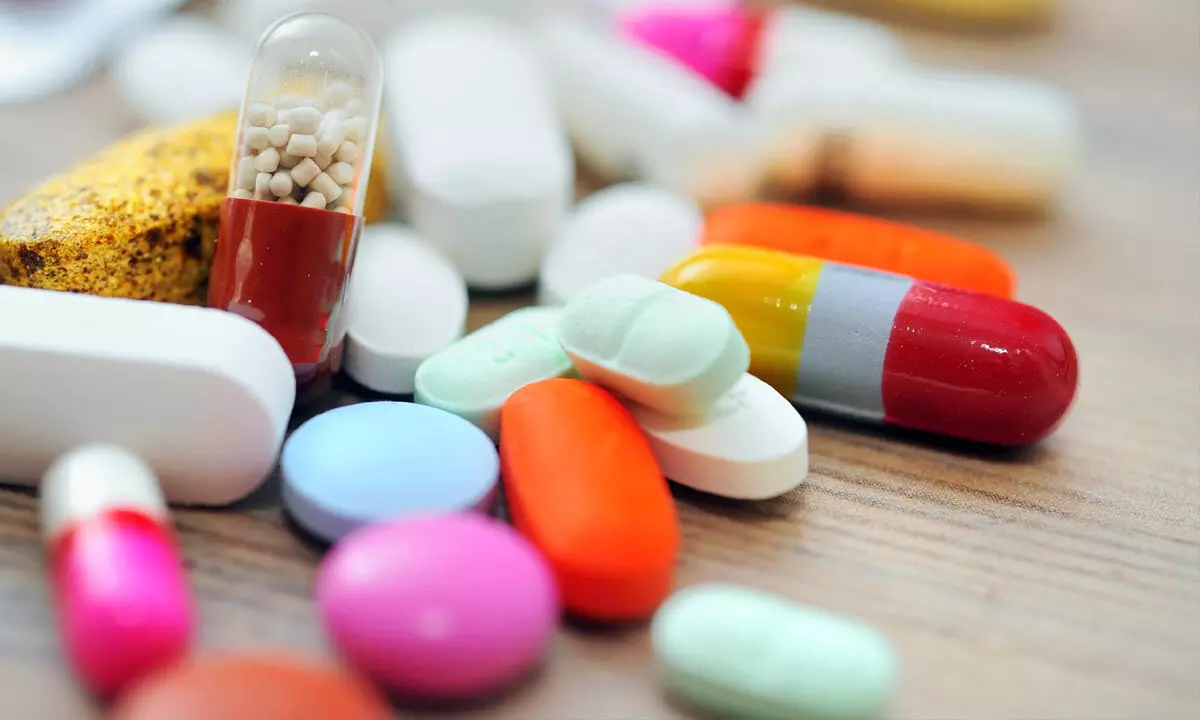Live
- BGT: Rohit, KL Rahul suffer injury scares ahead of Boxing Day Test
- PM Modi Visits Indian Labour Camp And Engages With Diaspora In Kuwait
- South Korea: Main opposition urges acting president to sign special counsel bills or face consequences
- Central PSUs record 47 per cent jump in net profit for 2023-24, market cap doubles
- Man In Madhya Pradesh Dies By Suicide, Leaves Video Alleging Harassment
- AAP Likely To Replace Shoaib Iqbal With Son Aaley Muhammad Iqbal For Matia Mahal Seat
- Multi-Storey Building Collapse In Mohali Triggers Massive Rescue Operation
- Anti-Corruption Officers Assaulted By Revenue Clerks In Uttar Pradesh
- Earthquake tremors felt again in Prakasam district
- G Trisha, spinners star as India win inaugural U19 Women’s Asia Cup title
Just In
NPRD should cover all rare diseases for financial support


NPRD should cover all rare diseases for financial support
The field of rare diseases is very complex and heterogeneous and prevention, treatment and management of rare diseases pose myriad challenges.
The field of rare diseases is very complex and heterogeneous and prevention, treatment and management of rare diseases pose myriad challenges. Early diagnosis of rare diseases is a major challenge owing to many factors that include lack of awareness among primary care physicians and a dearth of adequate screening and diagnostic facilities. There are also fundamental challenges in research and development for most rare diseases as relatively little is known about the pathophysiology or the natural history of these diseases, particularly in the Indian context.
Rare diseases are also difficult to research upon as the patient pool is very small and it often results in a shortfall when it comes to clinical experience. Availability and accessibility to medicines are also important to reduce morbidity and mortality associated with rare disease. Despite progress in recent years, there is a need to augment effective and safe treatment for rare diseases.
It was to address all these challenges that a comprehensive National Policy for Rare Diseases (NPRD) was released by the Union Health Ministry 2021. The run-up included holding consultations and taking opinions of different stakeholders and subject experts. Though there are around 8000 rare diseases, less than five per cent have therapies available to treat them. About 95 per cent rare diseases have no approved treatment and less than 1 in 10 patients receive disease specific treatment. Where drugs are available, they are prohibitively expensive, placing immense strain on resources. In the absence of insurance cover or adequate support, this adds to the financial burden of the patients and their families. Invariably those suffering from rare disease will rely on government assistance to get the treatment.
Given this situation, the inclusion of six more rare diseases into various groups of disorders under NPRD is a welcome step. This will enable the patients of these diseases to avail financial assistance to meet the treatment costs.
Laron’s Syndrome, Wilson’s Disease, Hypophosphatemic rickets, Congenital Adrenal Hyperplasia (CAH), Neonatal Onset Multisystem Inflammatory Disease (NOMID) and Atypical Hemolytic Uremic Syndrome (AHUS) are the six rare diseases that have been included under NPRD. In March 2021, the ministry had released NPRD that categorised are diseases into three groups-disorders amenable to one-time curative treatments (Group I), diseases requiring long term or life-long treatments but the treatment cost is low (Group II) and diseases for which definitive treatment is available but the cost is very high and the treatment has to be life-long (Group III).
Laron’s Syndrome is a rare disease in which the body is unable to utilise the growth hormones resulting in short stature and is placed under Group I; Wilson’s disease, in which copper is accumulated in vital organs like liver, brain and others; Congenital Adrenal Hyperplasia (CAH), a group of genetic disorders that affect the adrenal glands; and Neonatal Onset Multisystem Inflammatory Disease (NOMID) that causes continuous inflammation and tissue damage impacting the nervous system and joints, are included under the Group II disorders, while Group III includes Hypophosphatemic Rickets, which is caused by defects in the renal handling of phosphorus; and Atypical Hemolytic Uremic Syndrome (AHUS).
Financial assistance to patients suffering from these rare diseases shall be provided as per the provisions envisaged under the NPRD and guidelines and procedures issued to all Centres of Excellence (CoEs). Under the policy, there is provision for financial support of up to Rs. 50 lakh to patients suffering from any category of the rare diseases and for treatment in any of the CoE mentioned in NPRD-2021, outside the umbrella scheme of Rashtriya Arogaya Nidhi. A rare disease, often known as orphan disease, is a health condition of low prevalence that affects a small number of people compared with other prevalent diseases in the general population.
WHO defines rare disease as an often debilitating lifelong condition or disorder with a prevalence of one or less per 1,000 population. There are over 7,000 rare diseases globally and about 450 of them have been reported in India. The most common rare diseases reported in India include haemophilia, thalassemia, sickle-cell anaemia and primary immuno deficiency in children, auto-immune diseases, lysosomal storage disorders such as pompe disease, hirschsprung disease, Gaucher’s disease, cystic fibrosis, haemangiomas and certain forms of muscular dystrophies. There are an estimated 300 million rare disease patients worldwide of which 70 million are in India. But, for most of these patients, no treatment or very limited treatment options are available given the treatment costs. After having included six more diseases, under NPRD, the government should bring all rare diseases under the policy so that such patients will have a ray of hope.

© 2024 Hyderabad Media House Limited/The Hans India. All rights reserved. Powered by hocalwire.com






